Chris Eboch's Blog, page 22
July 20, 2015
Writing for the Right Age
Are You Writing for the Right Age?
Writing for children is different from writing for adults in a few important ways. One issue is the need to consider reading level. The grade level or reading level needs to fit the audience. For example, kindergartners might be able to understand a story if they heard it read aloud, when they wouldn’t actually be able to read it. A first-grader who is learning to read may have trouble with more advanced grammar, such as contractions and compound sentences. Most fifth-graders cannot read material written at a high school level. This means a story aimed at elementary children can look quite different from one aimed at teenagers.
Read more at:
http://www.childrenswritersguild.com/...
Writing for children is different from writing for adults in a few important ways. One issue is the need to consider reading level. The grade level or reading level needs to fit the audience. For example, kindergartners might be able to understand a story if they heard it read aloud, when they wouldn’t actually be able to read it. A first-grader who is learning to read may have trouble with more advanced grammar, such as contractions and compound sentences. Most fifth-graders cannot read material written at a high school level. This means a story aimed at elementary children can look quite different from one aimed at teenagers.
Read more at:
http://www.childrenswritersguild.com/...
Published on July 20, 2015 13:01
•
Tags:
writing-craft
July 13, 2015
Writing for Children or Teens: Happy Endings
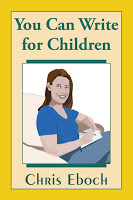 To celebrate the release of
You Can Write for Children
: A Guide to Writing Great Stories, Articles, and Books for Kids and Teenagers, I’m sharing a excerpt from one chapter on “Developing an Idea.” Week onestarted the topic of Developing an Idea, week twointroduced the parts of the story or article, and week three covered expanding the middle. Here’s part four:
To celebrate the release of
You Can Write for Children
: A Guide to Writing Great Stories, Articles, and Books for Kids and Teenagers, I’m sharing a excerpt from one chapter on “Developing an Idea.” Week onestarted the topic of Developing an Idea, week twointroduced the parts of the story or article, and week three covered expanding the middle. Here’s part four:Happy Endings
The climax ends with the resolution. You could say that the resolution finishes the climax, but it comes from the situation: it’s how the main character finally meets that original challenge.
In almost all cases the main character should resolve the situation himself. No cavalry to the rescue! Today, even romance novels rarely have the hero saving the heroine; she at least helps out. We’ve been rooting for the main character to succeed, so if someone else steals the climax away from him or her, it robs the story of tension and feels unfair.
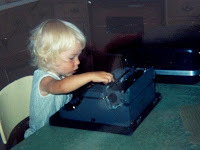 Keep the child in chargeHere’s where many beginning children’s writers fail. It’s tempting to have an adult – a parent, grandparent, or teacher, or even a fairy, ghost, or other supernatural creature – step in to save the child or tell him what to do. But kids are inspired by reading about other children who tackle and resolve problems. It helps them believe that they can meet their challenges, too. When adults take over, it shows kids as powerless and dependent on grownups. So regardless of your character’s age, let your main character control the story all the way to the end (though others may assist).
Keep the child in chargeHere’s where many beginning children’s writers fail. It’s tempting to have an adult – a parent, grandparent, or teacher, or even a fairy, ghost, or other supernatural creature – step in to save the child or tell him what to do. But kids are inspired by reading about other children who tackle and resolve problems. It helps them believe that they can meet their challenges, too. When adults take over, it shows kids as powerless and dependent on grownups. So regardless of your character’s age, let your main character control the story all the way to the end (though others may assist).  For example, Sam Bond’s
Cousins in Action
series is an ensemble featuring five cousins who have international adventures. The children take turns at being the hero throughout each book. In
Operation Golden Llama
, three of the young protagonists find themselves kidnapped on a mountainside in Peru. Their eleven-year-old cousin outwits the adults and treks through the jungle to come to their rescue.
For example, Sam Bond’s
Cousins in Action
series is an ensemble featuring five cousins who have international adventures. The children take turns at being the hero throughout each book. In
Operation Golden Llama
, three of the young protagonists find themselves kidnapped on a mountainside in Peru. Their eleven-year-old cousin outwits the adults and treks through the jungle to come to their rescue.Although your main character should be responsible for the resolution, she doesn’t necessarily have to succeed. She might, instead, realize that her goals have changed. The happy ending then comes from her new understanding of her real needs and wants. Some stories may even have an unhappy ending, where the main character’s failure acts as a warning to readers. This is more common in literary novels than in genre fiction.
Tip:
· How the main character resolves the situation – whether she succeeds or fails, and what rewards or punishments she receives – will determine the theme. To help focus your theme, ask yourself:
What am I trying to accomplish?
Who am I trying to reach?
Why am I writing this?
 art by Lois BradleyOnce you know your theme, you know where the story is going and how it must be resolved. For example, a story with the theme “Love conquers all” would have a different resolution than a story with the theme “Love cannot always survive great hardship.”
art by Lois BradleyOnce you know your theme, you know where the story is going and how it must be resolved. For example, a story with the theme “Love conquers all” would have a different resolution than a story with the theme “Love cannot always survive great hardship.”The next time you have a great idea but can’t figure out what to do with it, see if you have all four parts of the story. If not, see if you can develop that idea into a complete, dramatic story or novel by expanding your idea, complications, climax or resolution, as needed. Then readers will be asking you, “Where did you get that fabulous idea?”
You can get this whole essay, and a lot more – including a chapter on theme – in You Can Write for Children: A Guide to Writing Great Stories, Articles, and Books for Kids and Teenagers. Order for Kindle, in paperback, or in Large Print paperback.
In this book, you will learn:How to explore the wide variety of age ranges, genres, and styles in writing stories, articles and books for young people.How to find ideas.How to develop an idea into a story, article, or book.The basics of character development, plot, setting, and theme – and some advanced elements.How to use point of view, dialogue, and thoughts.How to edit your work and get critiques.Where to learn more on various subjects.
Published on July 13, 2015 06:00
July 6, 2015
Developing Your Story for Children or Teenagers
 I’ve released a new book on the craft of writing, called You Can Write for Children: A Guide to Writing Great Stories, Articles, and Books for Kids and Teenagers. If you are just starting out, this book will get you going. If you have some experience but need help developing your skills, this book will do that as well.
I’ve released a new book on the craft of writing, called You Can Write for Children: A Guide to Writing Great Stories, Articles, and Books for Kids and Teenagers. If you are just starting out, this book will get you going. If you have some experience but need help developing your skills, this book will do that as well. To celebrate the release, I’m sharing a excerpt from one chapter on “Developing an Idea.” Week onestarted the topic of Developing an Idea, week twointroduced the parts of the story or article, and here’s part three:
Building the Middle
If a character solves his goal easily, the story is boring. To keep tension high, you need complications.
For short stories, try the “rule of three” and have the main character try to solve the problem three times. The first two times, he fails and the situation worsens. Remember: the situation should worsen. If things stay the same, he still has a problem, but the tension is flat. If his first attempts make things worse, tension rises.
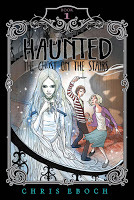 For novels, you may have even more attempts and failures. In my first Haunted book,
The Ghost on the Stairs
, I made sure each ghost encounter felt more dangerous. As Tania tries to get closer to the ghost in order to help her, Jon worries that she will go too far and be injured or even killed. With enough variety, you can sustain this kind of tension indefinitely (witness the ongoing battle between Harry and Voldemort in the seven-book Harry Potter series).
For novels, you may have even more attempts and failures. In my first Haunted book,
The Ghost on the Stairs
, I made sure each ghost encounter felt more dangerous. As Tania tries to get closer to the ghost in order to help her, Jon worries that she will go too far and be injured or even killed. With enough variety, you can sustain this kind of tension indefinitely (witness the ongoing battle between Harry and Voldemort in the seven-book Harry Potter series).You can worsen the situation in several ways. The main character’s actions could make the challenge more difficult. In my children’s mystery set in ancient Egypt, The Eyes of Pharaoh , a young temple dancer searches for her missing friend. But when she asks questions at the barracks where he was a soldier, she attracts dangerous attention from his enemies.
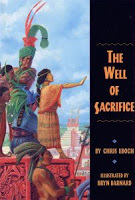 The villain may also raise the stakes. In my Mayan historical drama, In
The Well of Sacrifice
, the main character escapes a power-hungry high priest. He threatens to kill her entire family, forcing her to return to captivity.
The villain may also raise the stakes. In my Mayan historical drama, In
The Well of Sacrifice
, the main character escapes a power-hungry high priest. He threatens to kill her entire family, forcing her to return to captivity.Secondary characters can cause complications, too, even if they are not “bad guys.” In The Ghost on the Stairs , the kids’ mother decides to spend the day with them, forcing them to come up with creative ways to investigate the ghost while under her watchful eyes.
Finally, the main character may simply run out of time. At her first attempt, she had a week. At her second attempt, she had a day. Those two attempts have failed, and now she has only an hour! That creates tension.
Tip:
• For each turning point in the story, brainstorm 10 things that could happen next. Then pick the one that is the worst or most unexpected, so long as it is still believable for the story.
 Does your story have twists?Can She Do It?!
Does your story have twists?Can She Do It?!Your character has faced complications through the middle of the story. Finally, at the climax, the main character must succeed or fail. Time is running out. The race is near the end. The girl is about to date another guy. The villain is starting the battle. One way or another, your complications have set up a situation where it’s now or never. However you get there, the climax will be strongest if it is truly the last chance. You lose tension if the reader believes the main character could fail this time, and simply try again tomorrow.
Tips:
• Don’t rush the climax. Take the time to write the scene out in vivid detail, even if the action is happening fast. Think of how movies switch to slow motion, or use multiple shots of the same explosion, in order to give maximum impact to the climax. Use multiple senses and your main character’s thoughts and feelings to pull every bit of emotion out of the scene.
• To make the climax feel fast-paced, use mainly short sentences and short paragraphs. The reader’s eyes move more quickly down the page, giving a sense of breathless speed. (This is a useful technique for cliffhanger chapter endings as well.)
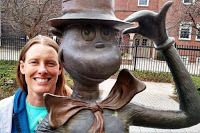 Next week I’ll share an excerpt on story endings. You can get the whole essay now, and a lot more, inYou Can Write for Children: A Guide to Writing Great Stories, Articles, and Books for Kids and Teenagers. Order for Kindle, in paperback, or in Large Print paperback.
Next week I’ll share an excerpt on story endings. You can get the whole essay now, and a lot more, inYou Can Write for Children: A Guide to Writing Great Stories, Articles, and Books for Kids and Teenagers. Order for Kindle, in paperback, or in Large Print paperback.
Published on July 06, 2015 05:30
June 30, 2015
The Parts of a Story or Article for Children
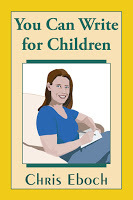 I’ve released a new book on the craft of writing, called You Can Write for Children: How to Write Great Stories, Articles, and Books for Kids and Teenagers. To celebrate the release, I’m sharing a excerpt from one chapter on “Developing an Idea.” The first segment was last week. Here’s part two:
I’ve released a new book on the craft of writing, called You Can Write for Children: How to Write Great Stories, Articles, and Books for Kids and Teenagers. To celebrate the release, I’m sharing a excerpt from one chapter on “Developing an Idea.” The first segment was last week. Here’s part two:A Story in Four Parts
If “beginning, middle, and end” doesn’t really help you, here’s another way to think of story structure. A story has four main parts: situation, complications, climax, andresolution. You need all of them to make your story work. (This is really the same as beginning, middle, and end, with the end broken into two parts.)
The situation should involve an interesting main character with a challenging problem or goal. Even this takes development. Maybe you have a great challenge, but aren’t sure why a character would have that goal. Or maybe your situation is interesting, but doesn’t actually involve a problem.
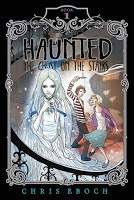 For example, I wanted to write about a brother and sister who travel with a ghost hunter TV show. The girl can see ghosts, but the boy can’t. That gave me the characters and situation, but no problem or goal. Goals come from need or desire. What did they want that could sustain a series?
For example, I wanted to write about a brother and sister who travel with a ghost hunter TV show. The girl can see ghosts, but the boy can’t. That gave me the characters and situation, but no problem or goal. Goals come from need or desire. What did they want that could sustain a series?Tania feels sorry for the ghosts and wants to help them, while keeping her gift a secret from everyone but her brother. Jon wants to help and protect his sister, but sometimes feels overwhelmed by the responsibility. Now we have characters with problems and goals. The story is off to a good start. (This became the four-book Haunted series.)
Tips:
· Make sure your idea is specific and narrow. Focus on an individual person and situation, not a universal concept. For example, don’t try to write about “racism.” Instead, write about one character facing racism in a particular situation.
· Ask why the goal is important to the character. The longer the story, the higher the stakes needed to sustain it. A short story character might want to win a contest; a novel character might need to save the world.
· Ask why this goal is difficult. If reaching the goal is too easy, there is little tension and the story is too short. The goal should be possible, but just barely. It might even seem impossible. The reader should believe that the main character could fail. (I go into more detail on this in a chapter on Characters in the book.)
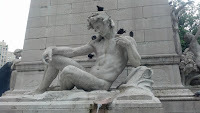 Is your character just sitting there?
Is your character just sitting there?· Even if your main problem is external, give the character an internal flaw that contributes to the difficulty. This adds complications and also makes your character seem more real. For some internal flaws, see the seven deadly sins: lust, gluttony, greed, sloth, wrath, envy, and pride.
· Test the idea. Change the character’s age, gender, or looks. Change the point of view, setting, external conflict, or internal conflict. Choose the combination that has the most dramatic potential.
 Next week I’ll share an excerpt on developing the middle of your story. You can get the whole essay now, and a lot more, in You Can Write for Children: A Guide to Writing Great Stories, Articles, and Books for Kids and Teenagers.
Next week I’ll share an excerpt on developing the middle of your story. You can get the whole essay now, and a lot more, in You Can Write for Children: A Guide to Writing Great Stories, Articles, and Books for Kids and Teenagers.Remember the magic of bedtime stories? When you write for children, you have the most appreciative audience in the world. But to reach that audience, you need to write fresh, dynamic stories, whether you’re writing rhymed picture books, middle grade mysteries, edgy teen novels, nonfiction, or something else.
In this book, you will learn:
How to explore the wide variety of age ranges, genres, and styles in writing stories, articles and books for young people.How to find ideas.How to develop an idea into a story, article, or book.The basics of character development, plot, setting, and theme.How to use point of view, dialogue, and thoughts.How to edit your work and get critiques.Where to learn more on various subjects.
Order for Kindle, in paperback, or in Large Print paperback.
Published on June 30, 2015 16:32
June 22, 2015
Writing for Children: Developing an Idea
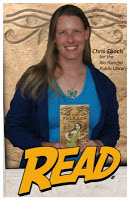 I’m releasing a new book on the craft of writing, called You Can Write for Children: A Guide to Writing Great Stories, Articles, and Books for Kids and Teenagers. If you are just starting out, this book will get you going. If you have some experience but need help developing your skills, this book will do that as well. I focus on sharing insight and advice on writing well. You’ll find straightforward information and exercises you can do on your own.
I’m releasing a new book on the craft of writing, called You Can Write for Children: A Guide to Writing Great Stories, Articles, and Books for Kids and Teenagers. If you are just starting out, this book will get you going. If you have some experience but need help developing your skills, this book will do that as well. I focus on sharing insight and advice on writing well. You’ll find straightforward information and exercises you can do on your own. In this book, you will learn: Opportunities for writing for children: Explore the wide variety of age ranges, genres, and styles, in both books and magazines.How to find ideas.How to develop an idea into a story, article, or book.The basics of character development, plot, setting, and theme – and some advanced elements.How to edit your work and get critiques.Where to learn more on various subjects.To celebrate the release, over the next three weeks I’ll be sharing an excerpt from one chapter on “Developing an Idea.” Here’s the first segment:
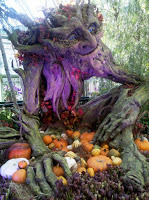 Ideas can grow from anywhereDeveloping an Idea
Ideas can grow from anywhereDeveloping an IdeaPeople often ask writers, “Where do you find your ideas?” But for a writer, the more important question is, “What do I do with my idea?”
If you have a “great idea,” but can’t seem to go anywhere with it, you probably have a premise rather than a complete story plan. A story should have three parts: beginning, middle, and end. This can be a bit confusing though. Doesn’t every story have a beginning, middle, and end? Technically, yes, but certain things should happen at those points.
1. The beginning introduces a character with a problem or a goal.
2. During the middle of the story, that character tries to solve the problem or reach the goal. He probably fails a few times and has to try something else. Or he may make progress through several steps along the way. He should not solve the problem on the first try, however.
3. At the end, the main character solves the problem himself or reaches his goal through his own efforts.
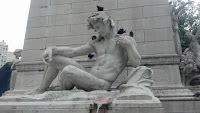 Thinking is not actionThere may be exceptions to these standard story rules, but it’s best to stick with the basics until you know and understand them. They are standard because they work!
Thinking is not actionThere may be exceptions to these standard story rules, but it’s best to stick with the basics until you know and understand them. They are standard because they work! Teachers working with beginning writers often see stories with no conflict. The story is more of a “slice of life.” Things may happen, possibly even sweet or funny things, but the story does not seem to have a clear beginning, middle, and end; it lacks structure. Without conflict, the story is not that interesting.
You can have two basic types of conflict. An external conflict is something in the physical world. It could be a problem with another person, such as a bully at school, an annoying sibling, a criminal, or a fantastical being such as a troll or demon. External conflict would also include problems such as needing to travel a long distance in bad weather.
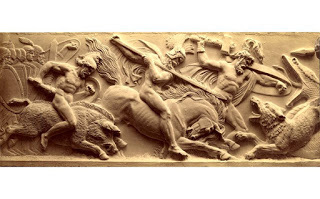 Conflict can be externalThe other type of conflict is internal. This could be anything from fear of the dark to selfishness. It’s a problem within the main character that she has to overcome or come to terms with.
Conflict can be externalThe other type of conflict is internal. This could be anything from fear of the dark to selfishness. It’s a problem within the main character that she has to overcome or come to terms with. An internal conflict is often expressed in an external way. If a child is afraid of the dark, we need to see that fear in action. If she’s selfish, we need to see how selfishness is causing her problems. Note that the problems need to affect the child, not simply the adults around her. If a parent is annoyed or frustrated by a child’s behavior, that’s the parent’s problem, not child’s. The child’s goal may be the opposite of the parent’s; the child may want to stay the same, while the parent wants the child to change.
For stories with internal conflict, the main character may or may not solve the external problem. The child who is afraid of the dark might get over that fear, or she might learn to live with it by keeping a flashlight by her bed. The child who is selfish and doesn’t want to share his toys might fail to achieve that goal. Instead, he might learn the benefits of sharing.
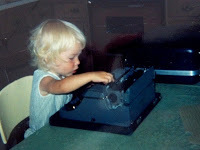 The child should stay in charge of the storyHowever the problem is resolved, remember that the child main character should drive the solution. No adults stepping in to solve the problem! In the case where a child and a parent have different goals, it won’t be satisfying to young readers if the parent “wins” by punishing the child. The child must see the benefit of changing and make a decision to do so.
The child should stay in charge of the storyHowever the problem is resolved, remember that the child main character should drive the solution. No adults stepping in to solve the problem! In the case where a child and a parent have different goals, it won’t be satisfying to young readers if the parent “wins” by punishing the child. The child must see the benefit of changing and make a decision to do so.Next week, I'll share another way of looking at story structure, using four parts: situation, complications, climax, and resolution. You can get the whole essay now, and a lot more, in You Can Write for Children: A Guide to Writing Great Stories, Articles, and Books for Kids and Teenagers. The Kindle version is available for pre-order now and will be automatically delivered June 30. The print version should be available by next week.
Published on June 22, 2015 10:34
May 22, 2015
Connecting Kids to History
Chris Eboch on Connecting Kids to History
"Historical fiction is a great way to bring history to life. It’s especially valuable for young people, who may not find textbook history interesting and who haven’t lived long enough to understand how quickly and dramatically the world can change."
See the entire post:
http://madaboutmghistory.blogspot.com...
"Historical fiction is a great way to bring history to life. It’s especially valuable for young people, who may not find textbook history interesting and who haven’t lived long enough to understand how quickly and dramatically the world can change."
See the entire post:
http://madaboutmghistory.blogspot.com...
Published on May 22, 2015 10:43
•
Tags:
historical-fiction
May 21, 2015
From Idea to Story
From Idea to Story, at The Children's Writer's Guild: "People often ask writers, “Where do you find your ideas?” But for a writer, the more important question is, “What do I do with my idea?”
See the full post:
http://www.childrenswritersguild.com/...
See the full post:
http://www.childrenswritersguild.com/...
Published on May 21, 2015 09:05
•
Tags:
writing-craft
April 17, 2015
Learning from the Maya
 My post on "Mad about Middle Grade History" blog is on "Learning from the Maya": One thing that intrigues me about history is how some of the lessons of the past resonate today. In The Well of Sacrifice, I explored some of the reasons the Mayan civilization collapsed. But I also showed how one person could have caused change. http://madaboutmghistory.blogspot.com...
My post on "Mad about Middle Grade History" blog is on "Learning from the Maya": One thing that intrigues me about history is how some of the lessons of the past resonate today. In The Well of Sacrifice, I explored some of the reasons the Mayan civilization collapsed. But I also showed how one person could have caused change. http://madaboutmghistory.blogspot.com...
Published on April 17, 2015 11:34
•
Tags:
maya, middle-grade
March 12, 2015
Why Write Historical Fiction for Children

My post today on the Mad About MG History will blog is on "Why Write Historical Fiction for Children." http://madaboutmghistory.blogspot.com... #histfic #MGlit
Published on March 12, 2015 10:42
•
Tags:
historical-fiction
March 4, 2015
Workshop on writing voice
I'm hosting a Q&A on writing voice at the Institute of Children's Literature's Writers Retreat. You should be able to read as a guest, even once it's over.
http://institutechildrenslit.net/inde...
http://institutechildrenslit.net/inde...
Published on March 04, 2015 09:31



